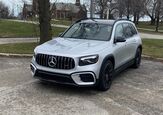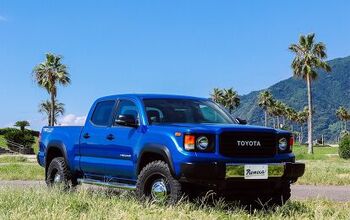Report: Toyota to Rollout New Operating Software By 2025

Toyota is allegedly on the cusp of launching a comprehensive driving software that incorporates everything from temperature control to autonomous driving. The Arene operating system (OS) will be proprietary to the automaker and assume duties that exceed multimedia management systems like Mercedes’ MBUX. Toyota’s software is supposed to be all-inclusive, much like the operating system found in Tesla products, and set itself up for hands-free motoring.
However, it would be a lie to claim that really matters, since automakers cannot help but promise that any new line of code is another step closer to driverless vehicles and chock full of artificial-intelligence goodness. For example, Volkswagen’s new software stalled the launch of multiple vehicles and resulted in an unresponsive, buttonless interface that has continued causing problems on its latest products. But VW will be the first ones to tell you it’s the only pathway toward widespread electrification, vehicular connectivity, self-driving, and commercial enlightenment.
It looks like Toyota’s Arene is to be one of those, though it’s far too early to assess whether it’ll succeed where VW has been failing. According to Nikkei Asia, the Japanese automaker doesn’t intend of launching the new operating system until 2025. Of course, Volkswagen Group plans on delivering an updated OS in the near future with more features and more responsibilities — as does General Motors, Mercedes-Benz, Hyundai Motor Group, TTTech Auto, Elektrobit, and a slew of other brands and suppliers.
From Nikkei:
Arene will control basic components — the steering wheel, brakes and accelerator, for example — and manage safety systems as well as location and traffic information. All vehicles with the OS, regardless of make or model, will have access to shared functions. Consumers can update the system online, much like smartphone software, enabling quick improvements to performance.
Engineers will be able to develop for the OS without waiting for new hardware, and cloud integration will let various teams within a corporate group work in parallel and remotely. The system is intended to allow for simulation and virtual testing as well.
Toyota will open Arene to other developers, encouraging companies from outside the industry to create applications for autonomous driving and other functions. The automaker envisions services from a variety of businesses being added to a car as easily as downloading smartphone apps.
The automaker anticipates that Arene will become a more effective platform as more users and developers join, generating more data that can be used to create new services.
Considering that Toyota recently confirmed that it would not be updating vehicles as 3G goes the way of the dinosaurs, we’re not exactly enthusiastic about brands embracing an entire operating system that will eventually stop getting manufacturer support.
If there’s a legacy automaker that likes to build cars conservatively, it’s Toyota. But the prospective value of unfettered software implementation is getting too sweet for any brand to ignore. Economy cars now offer advanced driving aids that would have been unthinkable a decade prior and automakers are keenly aware of the revenue afforded to them by using vehicular connectivity to harvest customer data. Regulators are also warming to the idea of over-the-air updates and full-time vehicle tracking. Meanwhile, companies have realized that they can use software updates to sell customers things in ( sometimes unsavory) ways that were previously unimaginable and may even help deliver on the promise of self-driving vehicles.
But we don’t have to like it to see the writing on the walls. Whether or not this works for consumers in the long term, the automotive sector has basically decided that digitizing cars is the future. Industry players are pulling money out of hardware development and putting it into software, with Lux Research predicting electronics and software will account for half of a vehicle’s total cost by 2030. That’s a lot of money to gamble unless companies were absolutely sure there’s a way to monetize it. Though there is also a lot of pressure for automakers to be the first to implement what might later become the industry-standard code.
[Image: Toyota]

A staunch consumer advocate tracking industry trends and regulation. Before joining TTAC, Matt spent a decade working for marketing and research firms based in NYC. Clients included several of the world’s largest automakers, global tire brands, and aftermarket part suppliers. Dissatisfied with the corporate world and resentful of having to wear suits everyday, he pivoted to writing about cars. Since then, that man has become an ardent supporter of the right-to-repair movement, been interviewed on the auto industry by national radio broadcasts, driven more rental cars than anyone ever should, participated in amateur rallying events, and received the requisite minimum training as sanctioned by the SCCA. Handy with a wrench, Matt grew up surrounded by Detroit auto workers and managed to get a pizza delivery job before he was legally eligible. He later found himself driving box trucks through Manhattan, guaranteeing future sympathy for actual truckers. He continues to conduct research pertaining to the automotive sector as an independent contractor and has since moved back to his native Michigan, closer to where the cars are born. A contrarian, Matt claims to prefer understeer — stating that front and all-wheel drive vehicles cater best to his driving style.
More by Matt Posky
Latest Car Reviews
Read moreLatest Product Reviews
Read moreRecent Comments
- Michael Gallagher I agree to a certain extent but I go back to the car SUV transition. People began to buy SUVs because they were supposedly safer because of their larger size when pitted against a regular car. As more SUVs crowded the road that safety advantage began to dwindle as it became more likely to hit an equally sized SUV. Now there is no safety advantage at all.
- Probert The new EV9 is even bigger - a true monument of a personal transportation device. Not my thing, but credit where credit is due - impressive. The interior is bigger than my house and much nicer with 2 rows of lounge seats and 3rd for the plebes. 0-60 in 4.5 seconds, around 300miles of range, and an e-mpg of 80 (90 for the 2wd). What a world.
- Ajla "Like showroom" is a lame description but he seems negotiable on the price and at least from what the two pictures show I've dealt with worse. But, I'm not interested in something with the Devil's configuration.
- Tassos Jong-iL I really like the C-Class, it reminds me of some trips to Russia to visit Dear Friend VladdyPoo.
- ToolGuy New Hampshire


































Comments
Join the conversation
Do they still sell those kits where you can build your simple car?
It’s “Roll Out…”.